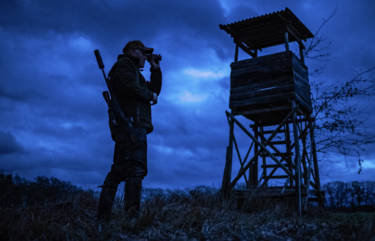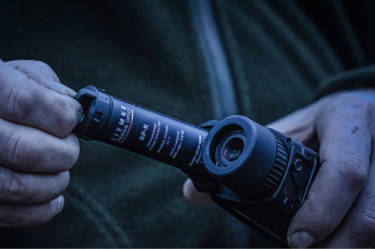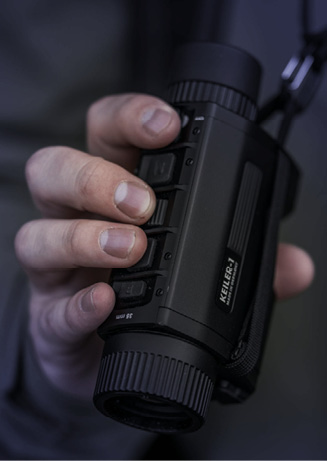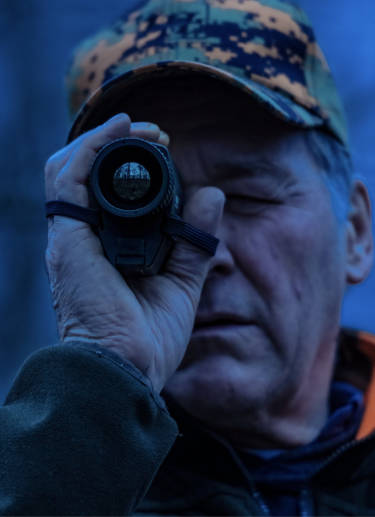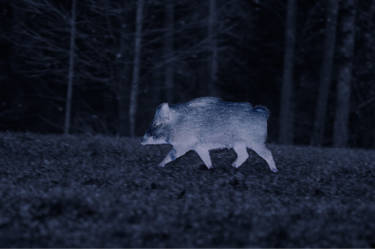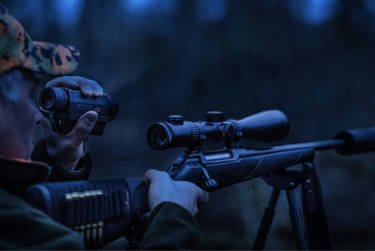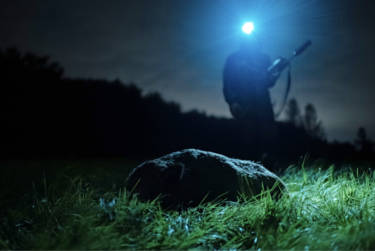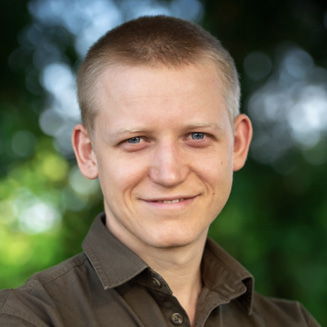An icy wind whistles through the last remaining leaves on the young oak trees. The edge of this field is not exactly a cosy spot. But it has become a little quieter and that is needed on a hunt. Besides, I have seen a big juvenile wild boar on the game camera. The tracks indicate that it keeps mainly to a small island of blackthorn in the middle of the field. From there, it is not far to the meadow, which has gained more black spots with each day. It seems that this is its first station for finding protein rich food. Only then does it move on the rubbing tree, where it was captured by the game camera. A robust juvenile is just the right thing for replenishing the sausage stocks before the end of the main hunting season.
Plenty of roe deer are already out in the late dusk. With the thermal imaging camera, I can detect them immediately and go around them to reach the stand unseen. Fleeing deer would have ruined the location of the stand. The low deer stand sits with its back against a thick oak tree that offers a little protection from the wind. From here, I have a good view of the blackthorn brush around 400 m away and of the holey meadow. Luckily, the farmer is an old friend and takes a relaxed attitude, especially as he has already been promised some sausages in return. The KEILER-1 reveals a glimpse of a tiny heat signature in the brush here and there. But it is simply impossible to make out what it is – could be three blackbirds or the juvenile. The deer provide a little entertainment while I wait. It is fascinating to watch how the young bucks are trying to test their strength but are not brave enough to touch each other’s velvet antlers.


